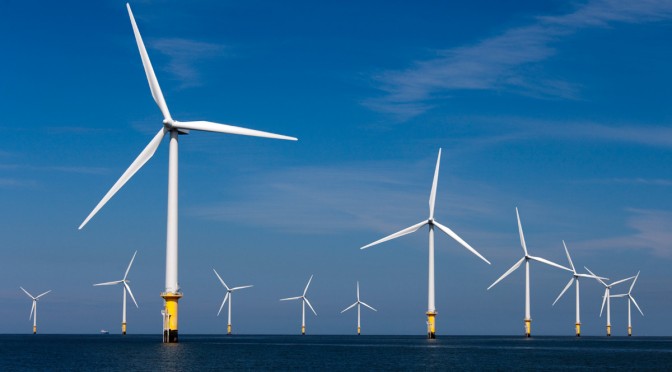The cost of offshore wind energy in Britain can become competitive with more established forms of energy in the next decade through better technology and bigger wind turbines.
DONG Energy is going ahead with the construction of the Race Bank Offshore Wind Farm, located in the Greater Wash area, just over 16 miles off the East Coast.
Race Bank will have a capacity of up to 580 megawatts, enough to power over 400,000 UK homes.
The offshore wind farm will consist of 91 6MW wind turbines, with Siemens Wind Power chosen as the preferred supplier for the delivery of these turbines. The deployment of the Siemens wind turbines is conditional upon the parties signing a final agreement.
Samuel Leupold, executive vice president at DONG Energy, said: “I’m very excited about the fact that we can start building the Race Bank Offshore Wind Farm, which will supply green electricity to more than 400,000 British households.
“It is yet another enabler for the growth of the offshore wind supply chain in the UK, and the project will create jobs in the UK at all levels of the supply chain.
“The size of this project will enable us to utilise the economies of scale to continue to drive down cost of electricity produced by offshore wind farms. This is a must win battle and we are getting one step closer with the decision to build this offshore wind farm.”
When all projects currently under construction – including the Race Bank Offshore Wind Farm – are completed, DONG Energy will have built a total of 4,400MW of offshore wind, of which 2,500MW will be located in the UK.
Race Bank will be constructed and operate under the UK’s Renewables Obligation Certificate (ROC) scheme (1.8 ROC).
Offshore wind power is one of the most expensive renewable energy technologies in Britain, because manufacturing and maintaining turbines strong enough to withstand marine environments is costly. The sector still relies heavily on government subsidies.
The companies want to reduce the cost of generating electricity to 100 pounds ($156.83) per megawatt hour (MWh) by 2020 from around 140 pounds/MWh now. That compares with a cost of around 90-100 pounds/MWh for new nuclear power.
“Offshore wind has only really been going for 10 years in Britain and is still a growing industry,” Benjamin Sykes, vice president and head of asset management at Dong Energy said in an interview at an industry conference in London.
“You have to look at when it will become cost-competitive with other energy sources, and we think we can get there sometime in the next decade,” he said.
Danish utility Dong Energy is Europe’s largest developer of offshore wind farms. It has 10 operational wind farms in Britain, two under construction and more projects in development. On Wednesday, it announced it would build another 580-megawatt (MW) wind farm off the east coast of Britain, which should be commissioned in 2018.
Dong is putting pressure on suppliers to cut offshore wind costs to 100 euros/MWh for investments from 2020.
To help drive costs down, the company favours giant wind turbines, such as the 8-MW Vestas which is already twice the size of the current standard.
It says these are cheaper in the long run because they only need one foundation, one subsea cable and less maintenance to produce the same power as two medium-sized turbines.
“We expect turbines to get even bigger and the blades to get longer, which will drive more efficiency. I wouldn’t be surprised if we see turbines of 10 MW capacity in the next 10 years,” Sykes said.
Special vessels to transport and assemble the huge turbines offshore are emerging, as well as technology breakthroughs for deeper foundations.
However, offshore wind investors in Britain also need more clarity on government support for offshore wind from 2021, after current support mechanisms end, he added.
Last week, the government decided to end direct subsidies for onshore wind a year early, in 2016, so that more money was available for other, less-established renewable technologies, such as offshore wind.


